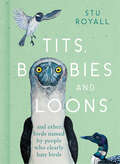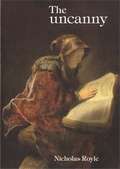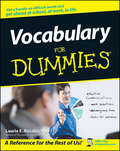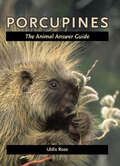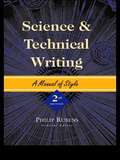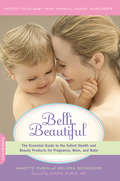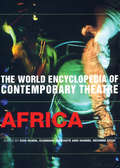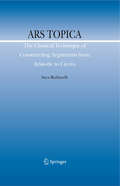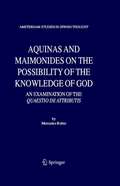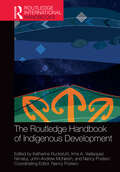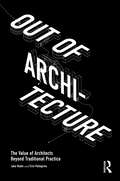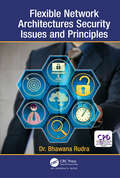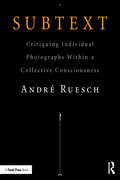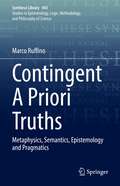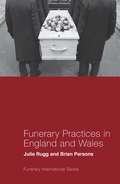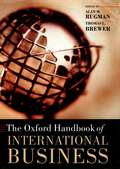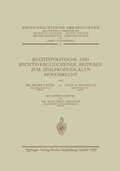- Table View
- List View
Tits, Boobies and Loons: And Others Birds Named By People Who Clearly Hate Birds
by Stu RoyallFrom the monotonous lark to the rough-faced shag, these poor birds have us all asking: ARE ORNITHOLOGISTS OK?
The Uncanny (PDF)
by Nicholas RoyleThis is the first book-length study of the uncanny, an important topic for contemporary thinking on literature, film, philosophy, psychoanalysis, feminism and queer history.
Vocabulary For Dummies (For Dummies Ser.)
by Laurie E. RozakisSomeone just called you captious. Should you be flattered? Considering your extreme lactose intolerance, is it a good idea to order veau au béchamel from a French menu? Calumny is to slander as obloquy is to a) flattery, b) sermon, or c) invective? You’ve just heard that your new boss is a real martinet, should you be worried or excited about an attractive new addition to your workplace? Your boyfriend says you have no élan, is he telling you you’re all out of yogurt? Starting to wish you’d paid more attention in English class? Don’t worry, it’s never too late to develop a million dollar vocabulary—and Vocabulary For Dummies offers you a fast, fun and easy way to do it. Whether you’re facing standardized tests, or you want to feel more knowledgeable at work or more comfortable in social situations, this book is for you. In no time you’ll: Dramatically expand your vocabulary Speak with style Write with panache Make a better impression a work or school Dine out with confidence Have the right words for formal occasions and ethnic events Get more out of what you read Vocabulary For Dummies doesn’t overwhelm you with endless word lists. Instead, it gives you a complete vocabulary-building program that familiarizes you with words from all areas of life as they’re used in context—from bar mitzvahs to business meetings, PCs to politics—with a host of fun features, including: Word tables organized by common features, such as language of origin, professional or social contexts, similarities, and more Sample conversations incorporate new terms and define related ones Before-and-After examples show how to replace old, general terms with new specific vocabulary Pointers reinforce understanding with examples of correct and incorrect usage Chapters on terms from finance, law, medicine, eating and shopping, history and mythology, various languages, and more Vocabulary For Dummies makes it easier than ever for you to get a handle on difficult words and get ahead at school, at work, and in life.
Porcupines: The Animal Answer Guide (The Animal Answer Guides: Q&A for the Curious Naturalist)
by Uldis RozeCould a porcupine make a good pet? Do they ever stick themselves or other porcupines with their quills? In this latest addition to the Animal Answer Guide series, we learn about these mysterious animals' "pincushion defense," along with the following facts:• Porcupines survive on a diet of leaves, bark, and fruit• Quills are actually modified hairs• There are 26 species of porcupines (and counting)• Old World and New World porcupines have a common ancestor but evolved independently• New World males will gather to fight ferociously over a single femalePorcupines: The Animal Answer Guide presents solid, current science in the field of porcupine biology. Uldis Roze compares and contrasts porcupines in terms of body plan, behavior, ecology, reproduction, and evolutionary relationships. He examines the diversity of porcupines from around the world—from North and South America to Africa and Asia.This guide explores the interactions between humans and porcupines, including hunting, use of quills by aboriginal societies, efforts to poison porcupines, and human and pet injuries (and deaths) caused by porcupines. Roze also highlights the conservation issues that surround some porcupine species, such as the thin-spine porcupine of Brazil, which is so rare that it was thought to be extinct until its rediscovery in the 1980s.
Porcupines: The Animal Answer Guide (The Animal Answer Guides: Q&A for the Curious Naturalist)
by Uldis RozeCould a porcupine make a good pet? Do they ever stick themselves or other porcupines with their quills? In this latest addition to the Animal Answer Guide series, we learn about these mysterious animals' "pincushion defense," along with the following facts:• Porcupines survive on a diet of leaves, bark, and fruit• Quills are actually modified hairs• There are 26 species of porcupines (and counting)• Old World and New World porcupines have a common ancestor but evolved independently• New World males will gather to fight ferociously over a single femalePorcupines: The Animal Answer Guide presents solid, current science in the field of porcupine biology. Uldis Roze compares and contrasts porcupines in terms of body plan, behavior, ecology, reproduction, and evolutionary relationships. He examines the diversity of porcupines from around the world—from North and South America to Africa and Asia.This guide explores the interactions between humans and porcupines, including hunting, use of quills by aboriginal societies, efforts to poison porcupines, and human and pet injuries (and deaths) caused by porcupines. Roze also highlights the conservation issues that surround some porcupine species, such as the thin-spine porcupine of Brazil, which is so rare that it was thought to be extinct until its rediscovery in the 1980s.
Science and Technical Writing: A Manual of Style
by Philip RubensWith this new edition, Science and Technical Writing confirms its position as the definitive style resource for thousands of established and aspiring technical writers. Editor Philip Rubens has fully revised and updated his popular 1992 edition, with full, authoritative coverage of the techniques and technologies that have revolutionized electronic communications over the past eight years.
Science and Technical Writing: A Manual of Style
by Philip RubensWith this new edition, Science and Technical Writing confirms its position as the definitive style resource for thousands of established and aspiring technical writers. Editor Philip Rubens has fully revised and updated his popular 1992 edition, with full, authoritative coverage of the techniques and technologies that have revolutionized electronic communications over the past eight years.
Belli Beautiful: The Essential Guide to the Safest Health and Beauty Products for Pregnancy, Mom, and Baby
by Annette Rubin Melissa SchweigerPregnant women are used to hearing the warnings from their ob-gyns about which foods and medications to avoid, but surprisingly no one informs them about which skin care ingredients could be potentially harmful to their unborn child through topical absorption. Many of the ingredients used in beauty products are normally safe, but when applied during pregnancy are actually linked to birth defects and miscarriage.Exposing the hidden pitfalls of the products we use every day, expert Annette Rubin-- founder of Belli Skincare, the #1 beauty brand recommended by ob-gyns--and beauty writer Melissa Schweiger show moms how to detoxify their skincare regimens. They explain the ingredients to watch for on labels and identify the safest products across major brands. But pregnancy and motherhood doesn&’t have to mean a ban on beauty! Packed with essential guidance, Belli Beautiful helps moms take the best care of their babies while still looking as fabulous as ever.
World Encyclopedia of Contemporary Theatre: Africa (World Encyclopedia Of Contemporary Theatre Ser.)
by Don Rubin Ousmane Diakhaté Hansel Ndumbe EyohNow available in paperback for the first time this edition of the World Encyclopedia of Contemporary Theatre series examines theatrical developments in Africa since 1945. Entries on thirty-two African countries are featured in this volume, preceded by specialist introductory essays on Anglophone Africa, Francophone Africa, History and Culture, Cosmology, Music, Dance, Theatre for Young Audiences and Puppetry. There are also special introductory general essays on African theatre written by Nobel Prize Laureate Wole Soyinka and the outstanding Congolese playwright, Sony Labou Tansi, before his untimely death in 1995. More up-to-date and more wide-ranging than any other publication, this is undoubtedly a major ground-breaking survey of contemporary African theatre.
Ars Topica: The Classical Technique of Constructing Arguments from Aristotle to Cicero (Argumentation Library #15)
by Sara RubinelliArs Topica is the first full-length study of the nature and development of topoi, the conceptual ancestors of modern argument schemes, between Aristotle and Cicero. Aristotle and Cicero configured topoi in a way that influenced the subsequent tradition. Their work on the topos-system grew out of an interest in creating a theory of argumentation which could stand between the rigour of formal logic and the emotive potential of rhetoric. This system went through a series of developments and transformations resulting from the interplay between the separate aims of gaining rhetorical effectiveness and of maintaining dialectical standards. Ars Topica presents a comprehensive treatment of Aristotle’s and Cicero’s methods of topoi and, by exploring their relationship, it illuminates an area of ancient rhetoric and logic which has been obscured for more than two thousand years. Through an interpretation which is philologically rooted in the historical context of topoi, the book lays the ground for evaluating the relevance of the classical approaches to modern research on arguments, and at the same time provides an introduction to Greek and Roman theory of argumentation focussed on its most important theoretical achievements.
Aquinas and Maimonides on the Possibility of the Knowledge of God: An Examination of The Quaestio de attributis (Amsterdam Studies in Jewish Philosophy #11)
by Mercedes RubioThis in-depth study of Thomas Aquinas’ Quaestio de Attributis binds together the findings of previous research on the unique history of this text by reconstructing the historical circumstances surrounding its composition, shows that the Quaestio contains Aquinas’ final answer to the dispute on the divine attributes, and thoroughly examines his interpretation of Maimonides’ position on the issue of the knowledge of God by analysing this and other texts related to it chronologically and doctrinally.
The Routledge Handbook of Indigenous Development (Routledge International Handbooks)
by Katharina Ruckstuhl Irma A. Velásquez Nimatuj John-Andrew McNeish Nancy PosteroThis Handbook inverts the lens on development, asking what Indigenous communities across the globe hope and build for themselves. In contrast to earlier writing on development, this volume focuses on Indigenous peoples as inspiring theorists and potent political actors who resist the ongoing destruction of their livelihoods. To foster their own visions of development, they look from the present back to Indigenous pasts and forward to Indigenous futures. Key questions: How do Indigenous theories of justice, sovereignty, and relations between humans and non-humans inform their understandings of development? How have Indigenous people used Rights of Nature, legal pluralism, and global governance systems to push for their visions? How do Indigenous relations with the Earth inform their struggles against natural resource extraction? How have native peoples negotiated the dangers and benefits of capitalism to foster their own life projects? How do Indigenous peoples in diaspora and in cities around the world contribute to Indigenous futures? How can Indigenous intellectuals, artists, and scientists control their intellectual property and knowledge systems and bring into being meaningful collective life projects? The book is intended for Indigenous and non-Indigenous activists, communities, scholars, and students. It provides a guide to current thinking across the disciplines that converge in the study of development, including geography, anthropology, environmental studies, development studies, political science, and Indigenous studies.
The Routledge Handbook of Indigenous Development (Routledge International Handbooks)
by Katharina Ruckstuhl Irma A. Velásquez Nimatuj John-Andrew McNeish Nancy PosteroThis Handbook inverts the lens on development, asking what Indigenous communities across the globe hope and build for themselves. In contrast to earlier writing on development, this volume focuses on Indigenous peoples as inspiring theorists and potent political actors who resist the ongoing destruction of their livelihoods. To foster their own visions of development, they look from the present back to Indigenous pasts and forward to Indigenous futures. Key questions: How do Indigenous theories of justice, sovereignty, and relations between humans and non-humans inform their understandings of development? How have Indigenous people used Rights of Nature, legal pluralism, and global governance systems to push for their visions? How do Indigenous relations with the Earth inform their struggles against natural resource extraction? How have native peoples negotiated the dangers and benefits of capitalism to foster their own life projects? How do Indigenous peoples in diaspora and in cities around the world contribute to Indigenous futures? How can Indigenous intellectuals, artists, and scientists control their intellectual property and knowledge systems and bring into being meaningful collective life projects? The book is intended for Indigenous and non-Indigenous activists, communities, scholars, and students. It provides a guide to current thinking across the disciplines that converge in the study of development, including geography, anthropology, environmental studies, development studies, political science, and Indigenous studies.
Out of Architecture: The Value of Architects Beyond Traditional Practice
by Jake Rudin Erin PellegrinoOut of Architecture is both a call to reassess the architecture profession and its education, and a toolkit for graduates and working architects to untangle their skills, passions, and value from traditional architectural practice and consider alternate pathways. Written by design professionals and expert career consultants, this book is informed by numerous client accounts as well as the authors’ own stories and routes out of architecture. The initial chapters follow the narrative of a typical architecture training in the US, highlighting the many highs and lows, skills honed, and ultimately the huge disconnect that can occur between architectural education and practice. Subsequent chapters explore a disillusionment with the profession, unhealthy work cultures, mentorship, working with lead architects, toxic perfectionism, and the notion of a “calling.” Authors then present the hopeful accounts of many architects who escaped a profession known for its grueling working conditions to find fulfilling, well-paying, creative jobs that better utilize the skills of architecture than the architectural profession itself. Written in a unique combination of storytelling and analysis, this patchwork of client and author stories makes for an immersive, provocative, and enjoyable read. A wide range of architecture students, graduates, educators, and professionals will recognize themselves within the pages of this book and find prompts to reassess their working practices, teaching styles, and the profession itself. It will be of particular value to those students skeptical of joining the architecture workforce, as well as those further along and considering a career change.
Out of Architecture: The Value of Architects Beyond Traditional Practice
by Jake Rudin Erin PellegrinoOut of Architecture is both a call to reassess the architecture profession and its education, and a toolkit for graduates and working architects to untangle their skills, passions, and value from traditional architectural practice and consider alternate pathways. Written by design professionals and expert career consultants, this book is informed by numerous client accounts as well as the authors’ own stories and routes out of architecture. The initial chapters follow the narrative of a typical architecture training in the US, highlighting the many highs and lows, skills honed, and ultimately the huge disconnect that can occur between architectural education and practice. Subsequent chapters explore a disillusionment with the profession, unhealthy work cultures, mentorship, working with lead architects, toxic perfectionism, and the notion of a “calling.” Authors then present the hopeful accounts of many architects who escaped a profession known for its grueling working conditions to find fulfilling, well-paying, creative jobs that better utilize the skills of architecture than the architectural profession itself. Written in a unique combination of storytelling and analysis, this patchwork of client and author stories makes for an immersive, provocative, and enjoyable read. A wide range of architecture students, graduates, educators, and professionals will recognize themselves within the pages of this book and find prompts to reassess their working practices, teaching styles, and the profession itself. It will be of particular value to those students skeptical of joining the architecture workforce, as well as those further along and considering a career change.
Flexible Network Architectures Security: Principles and Issues
by Bhawana RudraThe future of Internet security doesn’t lie in doing more of the same. It requires not only a new architecture, but the means of securing that architecture. Two trends have come together to make the topic of this book of vital interest. First, the explosive growth of the Internet connections for the exchange of information via networks increased the dependence of both organizations and individuals on the systems stored and communicated. This, in turn, has increased the awareness for the need to protect the data and add security as chief ingredient in the newly emerged architectures. Second, the disciplines of cryptography and network security have matured and are leading to the development of new techniques and protocols to enforce the network security in Future Internet. This book examines the new security architectures from organizations such as FIArch, GENI, and IETF and how they’ll contribute to a more secure Internet.
Flexible Network Architectures Security: Principles and Issues
by Bhawana RudraThe future of Internet security doesn’t lie in doing more of the same. It requires not only a new architecture, but the means of securing that architecture. Two trends have come together to make the topic of this book of vital interest. First, the explosive growth of the Internet connections for the exchange of information via networks increased the dependence of both organizations and individuals on the systems stored and communicated. This, in turn, has increased the awareness for the need to protect the data and add security as chief ingredient in the newly emerged architectures. Second, the disciplines of cryptography and network security have matured and are leading to the development of new techniques and protocols to enforce the network security in Future Internet. This book examines the new security architectures from organizations such as FIArch, GENI, and IETF and how they’ll contribute to a more secure Internet.
Piety in Pieces: How Medieval Readers Customized Their Manuscripts
by Kathryn M. RudyMedieval manuscripts resisted obsolescence. Made by highly specialised craftspeople (scribes, illuminators, book binders) with labour-intensive processes using exclusive and sometimes exotic materials (parchment made from dozens or hundreds of skins, inks and paints made from prized minerals, animals and plants), books were expensive and built to last. They usually outlived their owners. Rather than discard them when they were superseded, book owners found ways to update, amend and upcycle books or book parts. These activities accelerated in the fifteenth century. Most manuscripts made before 1390 were bespoke and made for a particular client, but those made after 1390 (especially books of hours) were increasingly made for an open market, in which the producer was not in direct contact with the buyer. Increased efficiency led to more generic products, which owners were motivated to personalise. It also led to more blank parchment in the book, for example, the backs of inserted miniatures and the blanks ends of textual components. Book buyers of the late fourteenth and throughout the fifteenth century still held onto the old connotations of manuscripts—that they were custom-made luxury items—even when the production had become impersonal. Owners consequently purchased books made for an open market and then personalised them, filling in the blank spaces, and even adding more components later. This would give them an affordable product, but one that still smacked of luxury and met their individual needs. They kept older books in circulation by amending them, attached items to generic books to make them more relevant and valuable, and added new prayers with escalating indulgences as the culture of salvation shifted. Rudy considers ways in which book owners adjusted the contents of their books from the simplest (add a marginal note, sew in a curtain) to the most complex (take the book apart, embellish the components with painted decoration, add more quires of parchment). By making sometimes extreme adjustments, book owners kept their books fashionable and emotionally relevant. This study explores the intersection of codicology and human desire. Rudy shows how increased modularisation of book making led to more standardisation but also to more opportunities for personalisation. She asks: What properties did parchment manuscripts have that printed books lacked? What are the interrelationships among technology, efficiency, skill loss and standardisation?
Subtext: Critiquing Individual Photographs within a Collective Consciousness
by Andre RueschSubtext invites and encourages personal and blatantly subjective responses to photographs and analyzes the drivers behind them. During decades of participating in critiques as both student and teacher, André Ruesch has become convinced that it is the personal response to work that connects us in the most visceral and meaningful way. This book aims to encourage and educate viewers how to read and understand photographs on a deeper level, honoring and validating their responses to photographs. This book seeks to vitalize students in the photography classroom. Rather than a dense tome of theory, this is an accessible guide to taking individual ownership of—and enjoying—the visual experience. To be visually literate is comparable to being linguistically literate. Such literacy is necessary to engender a deeper understanding and valuation of culture: both types of literacy create, enrich, define and historically document the expression of one individual to be shared by all.
Subtext: Critiquing Individual Photographs within a Collective Consciousness
by Andre RueschSubtext invites and encourages personal and blatantly subjective responses to photographs and analyzes the drivers behind them. During decades of participating in critiques as both student and teacher, André Ruesch has become convinced that it is the personal response to work that connects us in the most visceral and meaningful way. This book aims to encourage and educate viewers how to read and understand photographs on a deeper level, honoring and validating their responses to photographs. This book seeks to vitalize students in the photography classroom. Rather than a dense tome of theory, this is an accessible guide to taking individual ownership of—and enjoying—the visual experience. To be visually literate is comparable to being linguistically literate. Such literacy is necessary to engender a deeper understanding and valuation of culture: both types of literacy create, enrich, define and historically document the expression of one individual to be shared by all.
Contingent A Priori Truths: Metaphysics, Semantics, Epistemology and Pragmatics (Synthese Library #443)
by Marco RuffinoThis monograph offers a comprehensive study of contingent a priori truths. Building onto a theoretical framework developed by the philosopher and logician Saul Kripke, the author also presents a new approach to these truths. The first part of the book details the many theories on contingent a priori truths. The coverage examines the cases of Kripke and David Kaplan, Donnellan and the de re requirement, Evans and weak contingency, as well as Plantinga, Salmon, Soames, and the pseudo a priori. Overall, it provides a systematic discussion and critical review of all these many positions. Next, the author develops an alternative approach. His working hypothesis is that performative verbs must play a central role in Kripke’s examples, even if they do not show up at the surface structure of the corresponding sentences. This opens up an entirely new way of looking at Kripke’s cases and of treating them by exploring some aspects of the theory of illocutionary acts. His discussion also examines brute facts and institutional facts, indexicals and performatives, as well as Frege’s theory of definitions. Providing an authoritative exploration into contingent a priori truths, this book will be of interest to students, academics, and researchers in philosophy and logic.
Funerary Practices in England and Wales (Funerary International)
by Julie Rugg Brian ParsonsThe Funerary International series comprises essential reference texts for policy-makers, practitioners and academics with an interest in funerary practices globally. Each book has a country or region specific focus, addressing a standard framework of questions to aid comparison. This book sets English and Welsh funerary practice in its wider legal, national and local governance framework, including the continuing role of the Church of England. It provides the historical context for current practice, provides data on new trends in burial and cremation and examines recent developments including direct cremation and alkaline hydrolysis. It provides detail of current practice and includes a detailed description of a typical funeral, including commemorative practice, and discussion of funeral costs. Chapters address the legalities and technicalities of burial and cremation, explaining the concept of burial rights and the technicalities of grave construction, and outlining cremation certification requirements and the process of cremation. This book is a valuable desk-top resource to give a broader frame of reference for policy makers, and to provide explanation of key concepts for practitioners who may be new to this area of work. The text will be of particular value to academics that may be unfamiliar with the legal, technical and professional aspects of the funerary industry. The text is fully referenced, with an additional bibliography of further reading, and includes illustrations, charts, tables, diagrams and boxed text including key information.
Funerary Practices in England and Wales (Funerary International)
by Julie Rugg Brian ParsonsThe Funerary International series comprises essential reference texts for policy-makers, practitioners and academics with an interest in funerary practices globally. Each book has a country or region specific focus, addressing a standard framework of questions to aid comparison. This book sets English and Welsh funerary practice in its wider legal, national and local governance framework, including the continuing role of the Church of England. It provides the historical context for current practice, provides data on new trends in burial and cremation and examines recent developments including direct cremation and alkaline hydrolysis. It provides detail of current practice and includes a detailed description of a typical funeral, including commemorative practice, and discussion of funeral costs. Chapters address the legalities and technicalities of burial and cremation, explaining the concept of burial rights and the technicalities of grave construction, and outlining cremation certification requirements and the process of cremation. This book is a valuable desk-top resource to give a broader frame of reference for policy makers, and to provide explanation of key concepts for practitioners who may be new to this area of work. The text will be of particular value to academics that may be unfamiliar with the legal, technical and professional aspects of the funerary industry. The text is fully referenced, with an additional bibliography of further reading, and includes illustrations, charts, tables, diagrams and boxed text including key information.
The Oxford Handbook Of International Business (Oxford Handbooks In Business And Management Ser.)
by Alan M. Rugman Thomas L. BrewerThe Oxford Handbook of International Business comprises twenty-eight original chapters from the world's most distinguished scholars in the field of international business. United as a whole, these reflect both the present structure of the field and the major intellectual issues of current and likely future interest. Demonstrating analytical insight and critical thinking, the authors are all authorities on their chosen topics and have been active as leaders in the Academy of International Business. Their chapters survey and synthesize relevant literature of recent years, ensuring that the volume will be a primary reference for students and scholars throughout the social sciences. The book is split into five major sections, providing comprehensive coverage of the following areas: the history and theory of the multinational enterprise; the political and policy environment of international business; strategies of multinational enterprises; the financial areas of the multinational enterprise (marketing, finance and accounting, HRM, and innovation); and business systems in Asia, South America, and the transitional economies.
Rechtspolitische und Rechtsvergleichende Beiträge zum Zivilprozessualen Beweisrecht (Prozessrechtliche Abhandlungen)
by Helmut Rühl Char Fragistas N. Fritz AbrahamDieser Buchtitel ist Teil des Digitalisierungsprojekts Springer Book Archives mit Publikationen, die seit den Anfängen des Verlags von 1842 erschienen sind. Der Verlag stellt mit diesem Archiv Quellen für die historische wie auch die disziplingeschichtliche Forschung zur Verfügung, die jeweils im historischen Kontext betrachtet werden müssen. Dieser Titel erschien in der Zeit vor 1945 und wird daher in seiner zeittypischen politisch-ideologischen Ausrichtung vom Verlag nicht beworben.
